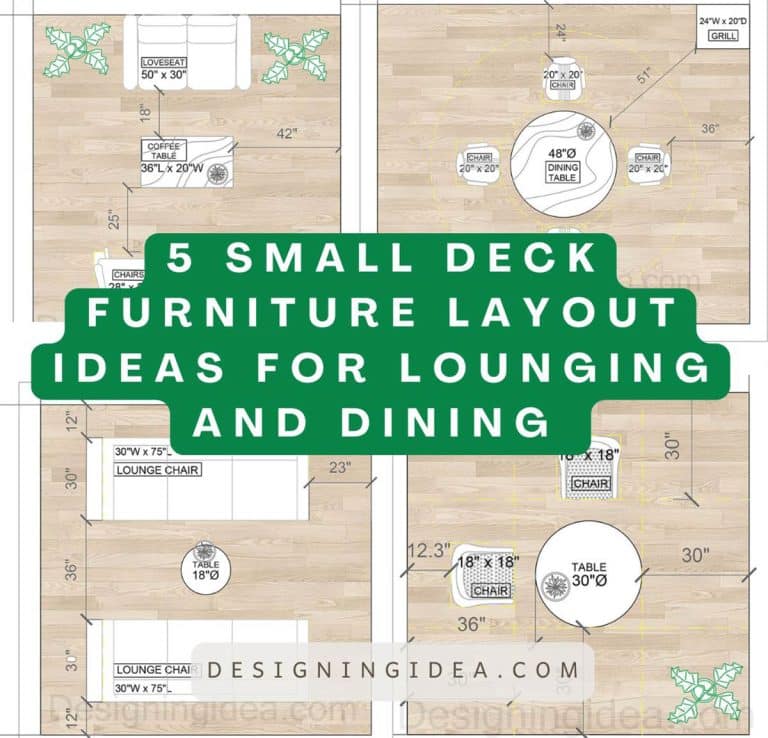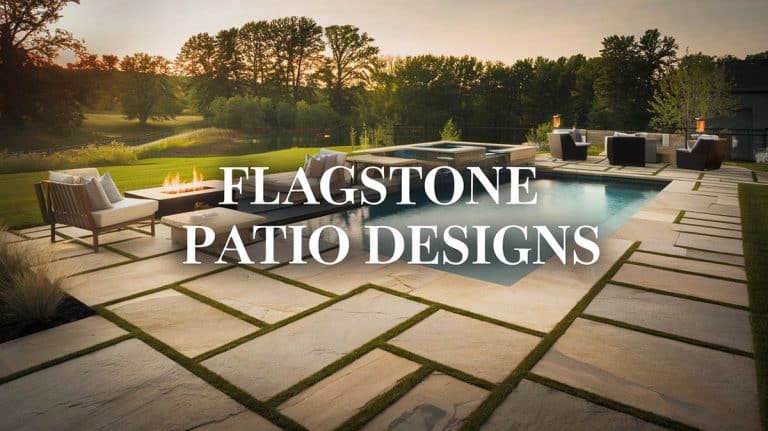How To DIY Your Paver Patio Maintenance For Stone & Brick
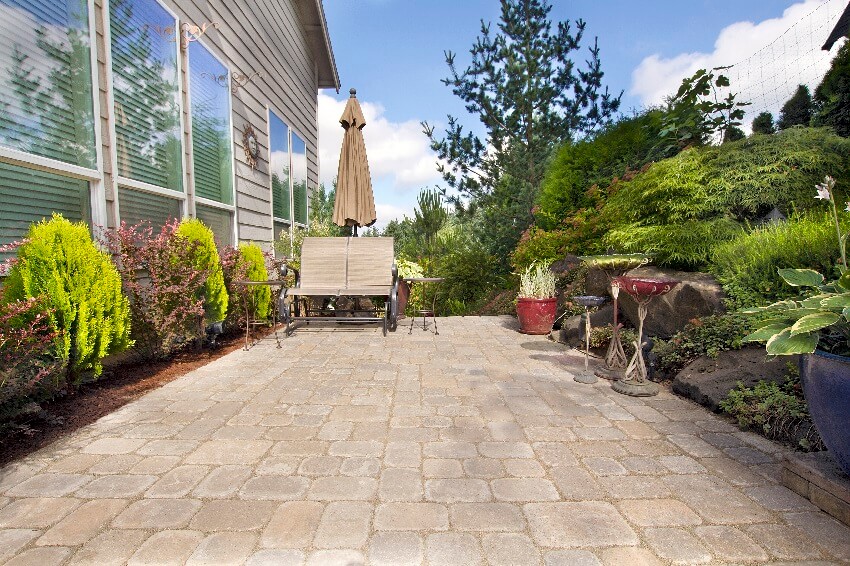
If you’re looking to revamp your backyard or outdoor landscape, installing a beautiful paver patio might just do the trick. Natural stones, bricks, and other materials typically make up the paver patios seen in most homes. With the wide range of patterns, textures, and hues these materials can give, you’ll surely have a beautiful backyard.
Besides the beauty it adds, this material appeals to homeowners for several other reasons. For one, it’s affordable. It’s also more durable than concrete surfaces. Finally, the surface is flexible and can adjust to soil movement, thus reducing the chances of cracks. All of these said paver patios need proper maintenance.
How to Maintain a Paver Patio
Paver patios go through rough wear and tear. Footprints, liquid stains, and other dirt accumulate on the surface over time, not to mention the harmful UV rays, moisture, and rain they’re typically exposed to. So, how do you ensure your paving stones remain in good condition?
Well, some need special care, depending on their material. But regardless of this, two steps apply to all: regular cleaning and sealing. Regular cleaning of paving stones entails sweeping off dirt and washing and lightly scrubbing the surfaces. This helps prevent the growth of moss, weeds, and mildew.
Sealing pavers provide an extra protective layer on the surface. Remember that you need to check which sealer you should use on the surface. A water-based sealer works well on paver patios with sand. It hardens the sand and prevents anything from penetrating between the joints of the stones.
Meanwhile, a solvent-based sealer turns the hue of the stones darker. It also produces a glossy finish, which is sometimes referred to as the “wet look.” This type of sealer works well on non-porous or smooth surfaces.
Aside from improving the visual appeal of your patio, sealers reduce the need for cleaning and prevent further damage. As mentioned, some types of materials may require other forms of maintenance. Let’s look into these more closely below.
| Step | Paver Cleaning Checklist |
|---|---|
| 1 | Inspect and/or replace damaged units. |
| 2 | Shield plants and apply cleaning agents for bad stains |
| 3 | Wear protective gear for cleaning. |
| 4 | Use 30-degree angled water spray to preserve jointing material. |
| 5 | Rinse off solutions to drain points. |
| 6 | Check and restore joint material. |
Upkeep of Patios with Stone Pavers

Stone pavers are made up of a mosaic of different stones like bluestone, travertine, or cobble, to name a few. That said, stones with different sizes mean different weights.
Heavier stones can sink and result in an uneven stone surface. When this occurs, your path becomes a tripping hazard. This is usually the case on grounds that have too much clay. When installing paving stones, ensure the base is more sandy.
You may also encounter the growth of weeds and moss between the joints of the stones. Open joints attract insects and can thus encourage burrowing.
Weekly weed, trim, and edge around the surfaces to avoid overgrowth. If your stone is laid next to a lawn area, mow the area consistently and consider installing an edging. Remove any build-up of leaves, grass clippings, and debris to help avoid staining.
Regular cleaning and resanding prevent these problems. Resanding allows for better binding and protects against insects and the growth of weeds and moss. You can also spray cleaning products with benzalkonium chloride on the surface.
Maintenance of Patios with Brick Pavers
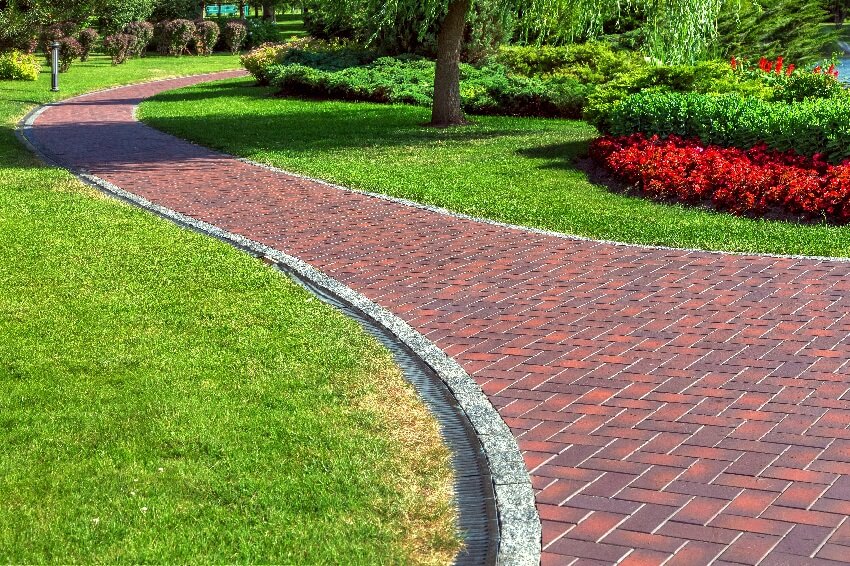
The warm tones of bricks make for an attractive patio. A brick paver surface is also easy to install and is the top choice for homeowners who want to DIY their hardscape. Protect your investment with proper maintenance. You can start by applying a sealer, which prevents sand erosion, staining, and color fading.
While at it, be sure to use sealers made for brick pavers. Like other materials, bricks are also prone to mildew, moss, and weeds, so sealing them is a must.
Brick Paver Maintenance with Sand
When pouring sand along the joints, use regular sand or opt for polymeric sand or poly-sand. Poly-sand is more expensive than regular sand. But the quartz and crystalline silica it contains result in better binding. Better binding also helps in locking the bricks in place.
Resanding is usually required as rain or a regular cleaning brush off the sand. If you’re using regular sand, it is best to re-pour sand every two years or as soon as you notice cracks.
If that’s too much work for you, consider investing in poly-sand. Although more expensive, going this route can save you from re-sanding for up to 10 years. Whichever sand you use, it is also advised to fortify it with a sealer.
Cleaning Paved Patios
When cleaning your paved pavers, a good old power washer can make a difference. The pressure from the power washer effectively removes dirt and grime on the surface. Do note that certain power washers should be used for certain surfaces. This is vital as other strong power washers can destroy your pavers.
Address growths, insects, and grime by scrubbing the surfaces every once in a while. Before brushing, consider applying any of these solutions:
- Water and white vinegar
- Dishwashing soap and water
- Bleach or specially formulated soap
The first two options are effective if you have little to no dirt and growth on the surface. Otherwise, you will need a specially formulated chemical. These are readily available in the market.
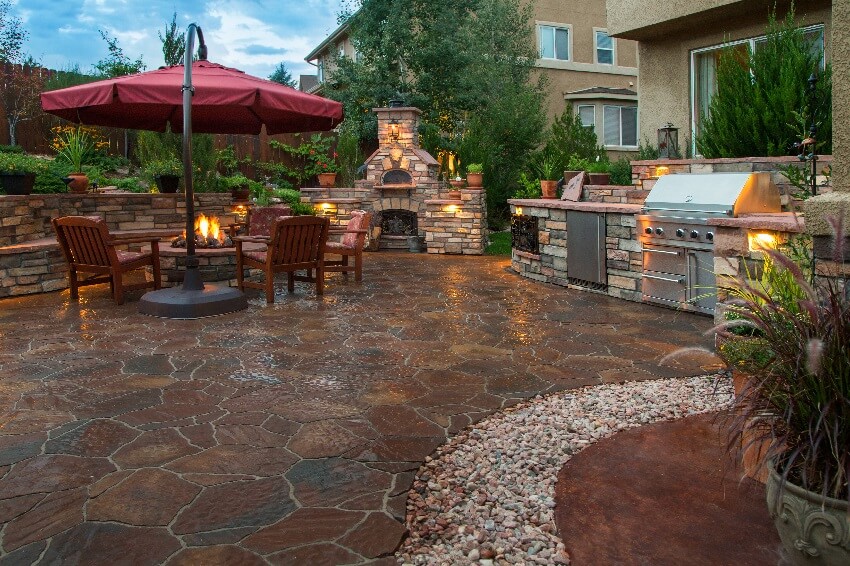
When cleaning pavers, you may also need to remove all the sand before resanding to uproot the weeds embedded in the ground. That said, it’s possible to clean your surface without removing the sand.
How to Clean Pavers Without Removing Sand
Start with applying watered-down oxygenated bleach on the surface. Let this liquid formula sit for at least 15 minutes to sterilize the surface and make scrubbing easier.
To avoid washing off the sand, do not point the power wash on the joints. You can always top the joints with sand if some of it was washed away.
Preventing Moss Growth On Pavers
Your paver patio may lose its appeal and can be a slip-hazard if moss starts to grow. Moss also tends to hold moisture, which can cause cracks in the stones. Before tackling this problem, it is crucial to differentiate your moss.
Lawn moss is not the same as moss that grows on hard surfaces. Knowing what type of moss you’re dealing with will inform you on what kind of product you can use best to kill it.
You can also try using the home remedies stated above. These include dish-washing liquid and water or water mixed with a bleach-based formula.
Since moss thrives in shaded and wet places, keep your patio dry. Don’t forget the two-step process of sealing your pavers and regularly cleaning them.

